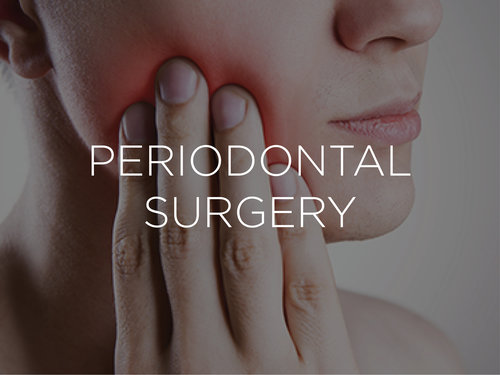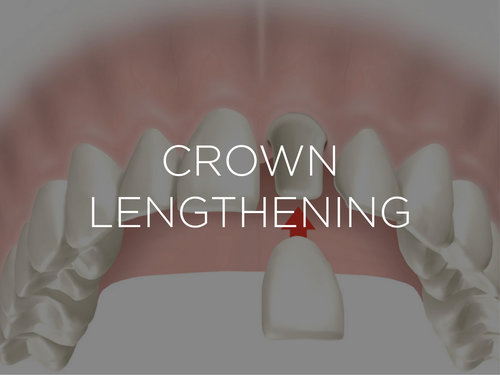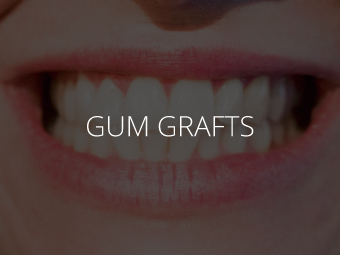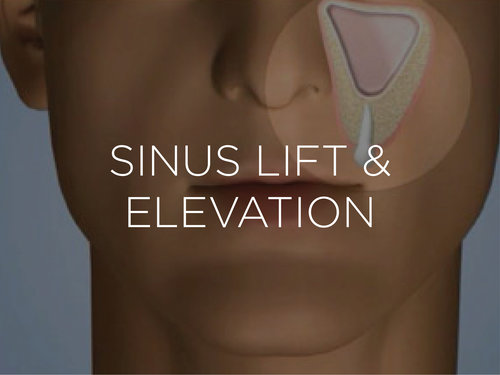Periodontal Services
Periodontal Treatment Options
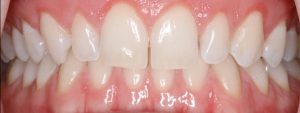
Healthy Gums After Periodontal Services
Periodontal disease (also called gum disease) is more common than you may think. Gum disease is an inflammation and infection of the tissues that surround and support your teeth. Periodontal diseases range from simple gum inflammation like gingivitis, to serious irritation, like gum disease, that results in major damage to the soft tissue and bone that support the teeth. It is a major cause of tooth loss in adults. Because gum disease is usually painless, you may not know you have it. Gum disease can also negatively affect the health of the rest of your body. Numerous studies have shown that periodontitis is linked to an increased risk of heart disease, diabetes, respiratory disease, and pregnancy complications.
What Causes Periodontal Disease?
Our mouths are filled with bacteria. These bacteria, along with mucus and other particles, constantly form a sticky, colorless plaque on teeth. Brushing and flossing help get rid of plaque, but these alone only slow the buildup of plaque. Plaque that is not removed can harden and form tartar, which brushing cannot clean. Only professional teeth cleaning by a dentist or dental hygienist can remove tartar, which is why it is so important to keep regularly scheduled appointments with a Manhattan dentist. Gingivitis is usually the first stage of gum disease, which is common in children. The longer plaque and tartar remain on teeth, the more harmful they become. When bacteria cause inflammation in the gums, it is called gingivitis. When a person gets gingivitis, the gums become red, swollen and can bleed easily. Gingivitis is a mild form of gum disease that can usually be fixed with daily brushing a flossing and regular cleaning by a dentist or dental hygienist. This form of gum disease will not result in any loss of bone and tissue that hold teeth in place. When gingivitis is not treated, it can advance to periodontitis, or rather, inflammation around the tooth. When a person contracts periodontitis, gums pull away from the teeth and form spaces called pockets that become infected. The body’s immune system fights these bacteria as the plaque spreads and grows below the gum line. Bacterial toxins and the body’s white blood cells attack on the infection start to break down bone and connective tissue that hold the teeth in place. If not treated, the bones, gums, and tissue that support the teeth will be destroyed. The teeth may eventually become loose and have to be removed.
Symptoms of Periodontal Disease
The most common sign and symptom of gum disease, or someone who is in need of periodontal services, is a toothache. If you experience pain in your teeth without any bleeding, this is the time to act before the gum disease can worsen. As it progresses, gum disease will be associated with signs and symptoms such as gum infection, swelling, pain, and further bone destruction.
- Bad breath that won’t go away
- Red or swollen gums
- Tender or bleeding gums
- Painful chewing
- Loose teeth
- Sensitive teeth
The Major Types of Gum Disease
It is vital to brush, floss and see your dentist regularly. If you don’t practice regular dental care, you open yourself up to a barrage of oral diseases and complications. Let’s look now at some of the major gum diseases that are common and the problems they can cause:
Gingivitis
Gingivitis is the mildest and most common form of Gum Disease. It causes gums to become swollen, bleeds often times. Gingivitis is most often caused by lack of dental care. Over 50% of adults will have Gingivitis. The good news is Gingivitis is treatable and reversible with Professional Dental care. While most cases are attributed to bad oral hygiene there could be an underlying cause such as diabetes, smoking, aging, genetic predisposition, systemic diseases and conditions, stress, inadequate nutrition, puberty, hormonal fluctuations, pregnancy, substance abuse, HIV infection, and certain medical uses. If you develop Gingivitis, of course, visit your Dentist, but it may be a good idea to get a full physical as well just to be on the safe side.
Periodontitis
Untreated gingivitis can evolve into periodontitis a far more serious condition of the gums. In time untreated dental hygiene will cause tooth tartar will develop into plaque. Plaque can spread and grow below the gum line. Toxins produced by the bacteria in plaque irritate the gums. The toxins can cause the gums to inflame and the tissues and bone that support the teeth are at risk of being destroyed. Gums separate from the teeth, form pockets that are prone to infection. As the disease progresses, the pockets deepen and more gum tissue and bone are destroyed. Often, this process can become lead to teeth that may have to be removed. There are many forms of periodontitis. The most common ones include the following.
- Aggressive periodontitis – This can occur in patients who are otherwise clinically healthy. Common features include rapid attachment loss and bone deterioration.
- Chronic periodontitis – Results in inflammation within the supporting tissues of the teeth, progressive attachment, and bone loss. This is the most frequently occurring form of periodontitis and is characterized by pocket formation. It is prevalent in adults but can occur at any age. Progression of attachment loss usually occurs slowly, but can rapidly increase causing a high risk of tooth loss.
- Systemic diseases caused Periodontitis – This will mostly begin at a young age. Systemic conditions such as heart disease, respiratory disease, and diabetes are associated with this form of the disease. This should be treated by a pediatric dentist.
- Periodontal disease caused by chronic illness – This infection characterized as “necrosis” of gingival tissues. These can be described as pockets or lesions that within the mouth that can be caused by conditions such as HIV, malnutrition, and immunosuppression. If you feel this may match your symptoms of Gum Disease see your dentist and General Practitioner immediately.
What Are Some of the Risk Factors That Speed Up the Process of Periodontal disease?
- Smoking. Need another reason to quit smoking? Smoking is one of the most influential risk factors associated with the contraction of gum disease. Also, smoking can lower the chances for successful treatment.
- Hormonal changes in girls/women. These changes make gums more sensitive and provide a gateway for gingivitis to infect the mouth.
- Diabetes. People with diabetes are at higher risk for developing infections, including gum disease.
- Diseases such as AIDS and its treatments can also negatively affect the integrity of gums, as can treatments for cancer.
- Medications. There are hundreds of prescription and over the counter medications that can reduce the flow of saliva, which has a protective effect on the mouth, leading to dry-mouth and dehydrating the gums. Without enough saliva, the mouth is vulnerable to infections such as gum disease. Also, some medicines can cause abnormal overgrowth of the gum tissue; this can make it difficult to keep teeth and gums clean.
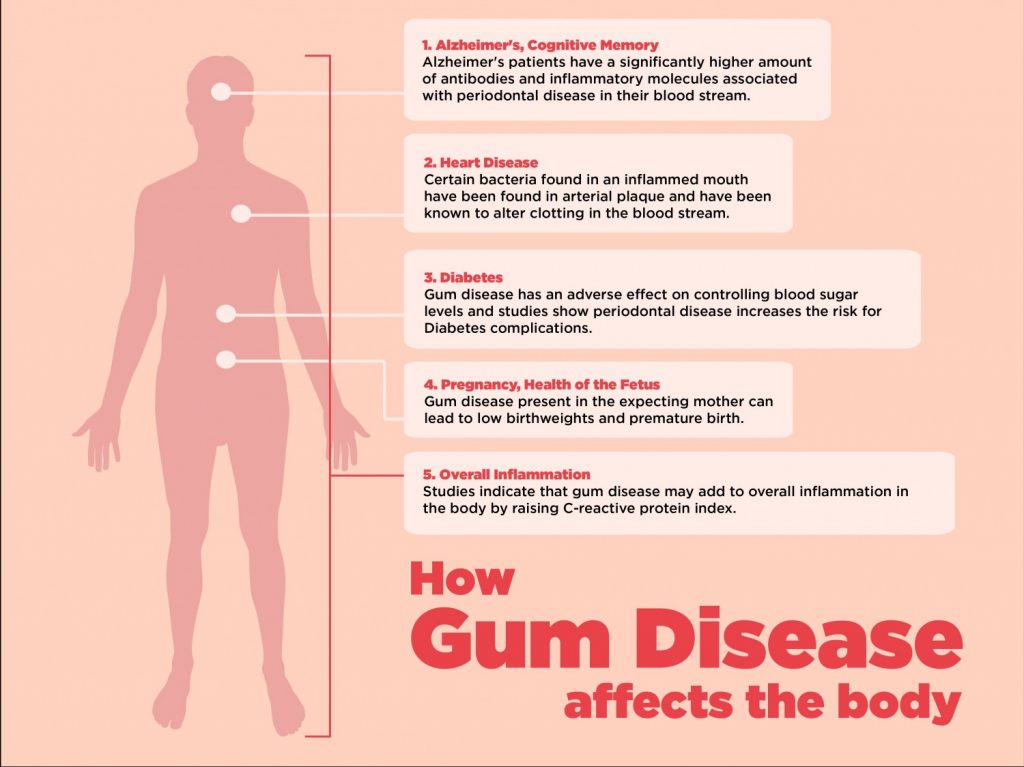
Non-Surgical Periodontal Treatment:
- Professional dental cleaning: this involves the plaque and tartar being removed from the gum lining above your teeth during a standard check-up from your dentist or dental hygienist. If you have signs of gum disease or have had it in the past, it is recommended you get a check-up at least twice a year. If you are in treatment for gum disease, your dentist or hygienist might even recommend you come in for more frequent cleanings, every 3 to 4 months.
- Scaling and root planning: this is a form of deep cleaning using local anesthetic. Any plaque and tartar above and below the gum line are scraped away by scaling them, and then any rough spots around the tooth roots are smoothed out in a process call planning.
Surgical Periodontal Treatment:
- Flap surgery: this procedure involves the gums being lifted back and the tartar removed from the pockets that occur with periodontitis. This method Periodontal removes or lessens the gap between your gum and teeth to reduce the risk of further plaque build-up.
- Bone grafts: the graft acts as a platform to allow regrowth of the bone of your teeth to restore stability. This replaces the bone destroyed by the gum disease. Bone graft material can come from your own body or it can be organic (bone from a cadaver, which has been sterilized), or synthetic. The periodontist will advise you of your options with respect to bone grafting materials.
- Guided tissue regeneration: when teeth have been destroyed by gum disease, this procedure stimulates and encourages bone and gum tissue growth. It is done in combination with flap surgery to keep the gum tissue from growing into the area where the bone should be.
- Soft tissue grafts: here the thin gums or fills are reinforced where the gums have receded. The grafted tissue is stitched into place, therefore adding tissue to the area affected by gum disease.
- Osseous surgery: During this procedure, the periodontist will fold back the gum tissue and remove the disease-causing bacteria before securing the tissue back into place. If the underlying bone has been damaged, the irregular surface will be smoothed out to limit areas where disease-causing bacteria can hide. This will also allow your gum tissue to reattach to healthy bone more effectively. This procedure is also known as “pocket depth reduction.”
Gum Disease Prevention
The best way to prevent gum disease is to establish a solid dental hygiene routine. Optimal dental care at home will keep your teeth and gums in a happy and healthy state and reduce the risk of any bacteria and plaque building up. At 212-Smiling, we recommend brushing your teeth twice a day, in the morning and at a night. This should be accompanied with flossing twice a day to remove plaque from in between your teeth and in the places where a toothbrush can’t reach. The use of mouthwash is also a good idea to ensure all specks of plaque and bacteria are removed. In addition to a good dental care routine in the home, you should have your teeth checked twice a year in a regular check-up with your dentist and dental hygienist. This way you get your teeth professionally cleaned and cared for while staying one step ahead of any potential gum disease. When it comes to preventing periodontitis, it is much better to be proactive rather than reactive.

